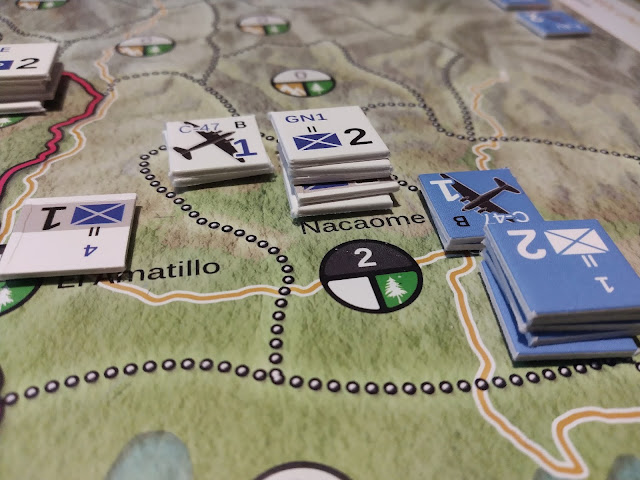Commands & Colors: Ancients. The vengeance of Akragas
Syracusans: Laura Beltrami
Carthaginians: Alex Isabelle
A few weeks after the first battle of Akragas (ie: the same scenario) the same game is repeated with reversed parts, thanks to the fact that the first time we had fooled a fundamental rule that had greatly changed the game, introducing a dynamic of "fog of war" all in all functional but not foreseen by the original game. This time I am in command of the Carthaginian troops, historically plagued by this confrontation, which saw the elite troops of Magna Graecia kick the asses of the rear of the Carthaginian troops intent on besieging Akragas, today's Agrigento.
The scenario is a bit asymmetrical. The Syracusans have a rather balanced front with a very solid center, made up of heavy troops who, if given the chance to do damage, are well capable of carrying out a massacre. The Carthaginians, on the other hand, have a slightly more grungy front, with a slightly more solid side and a slightly higher mobility.
Both sides conducted the battle as per protocol: while the Syracusans advanced in the center, the Carthaginians attacked their weaker side, obtaining a first advantage, quickly reabsorbed by the Syracusans who withdrew the chosen troops in the direction of that side of the battlefield. To prevent damage, the Carthaginians began to put pressure on the opposite side, forcing the Syracusan central front to break up to counter these attacks. This took some pressure off the lateral front, where, however, the Syracusan infantry managed to make a decent slaughter, obtaining a significant advantage in the clash and almost managing to kill the Carthaginian leader at the helm of those troops, a so-called Hasdrubal.
 |
| Hasdrubal leads the right wing of the Carthaginian army |
At the same time, the central advance of the Syracusans met with courageous resistance from the Carthaginian auxiliary troops, mercenaries who proved to be worth the money with which they had been paid. One of the Syracusan heavy infantry units was eliminated after a series of repeated and well-calculated attacks; the second, under the command of the Greek leader, has desisted from pursuing further initiatives.
This led to a match point: only one other unit fell in combat, only one other leader killed in the melee, and all the comrades of the fallen soldiers would retreat. Everything would be decided in a few, fatal, final moments.
It was up to the Carthaginians to attack. Among all the more or less unpleasant options, it was decided to follow the one that would have delivered to posterity the most beautiful epic to recall, regardless of the result. Having narrowly survived the clash with the Syracusan heavy infantry, the only one of his original battalion not to have beaten a retreat, Hasdrubal decided to hold on and to call a nearby medium infantry unit to himself, at the helm of which he immediately counterattacked the Syracusan heavy infantry unit which had almost sent it to the creator, and which had already been beaten by previous battles.
The impact was decisive: beaten in number and tenacity, the Syracusan soldiers gave up their weapons and ran away from where they had come.
Do you want to read other stories? Click here for the full list.
 |
| The battlefield at half game |
 |
| The central front |
 |
| The left side of the battlefield, a game of glances between the cavalry of the two armies |



Comments
Post a Comment